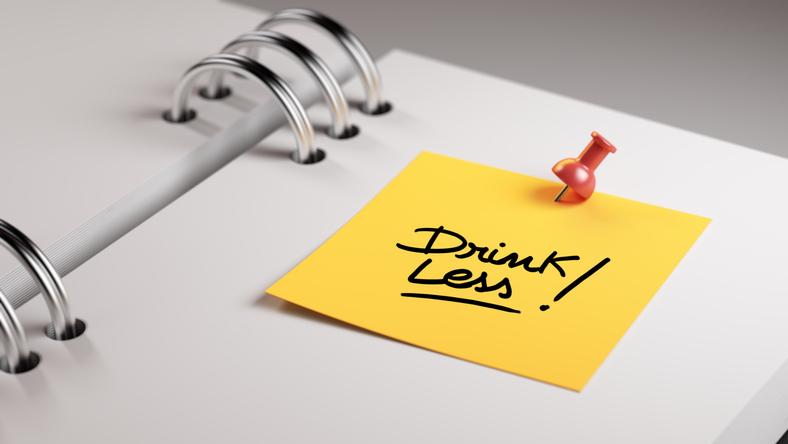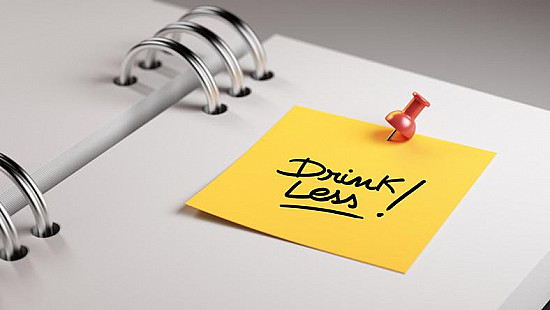
When experts talk about the dangers of excessive drinking, we often assume those warnings apply mostly to people with alcohol use disorder, a health issue sometimes referred to as alcoholism.
But people who don’t meet formal criteria for this disorder can still experience toxic effects and suffer other serious harms from alcohol, says Dr. John F. Kelly, professor of psychiatry in addiction medicine at Harvard Medical School. And as research turns up new evidence about alcohol, many people are considering the benefits of drinking less, even if they’re not ready to stop imbibing entirely.
How does alcohol affect the body?
That depends on how much you drink. Drinking more than moderate amounts of alcohol (defined as one drink per day for women and two for men) increases your risk for developing
- liver disease
- several types of cancer including breast, liver, and colon cancer
- cardiovascular problems such as high blood pressure and atrial fibrillation.
What if you’re not drinking daily? “Even people who only drink on weekends can have serious accidents if they become intoxicated — for example, by falling or driving under the influence,” says Dr. Kelly.
What’s more, growing evidence suggests that even small amounts of alcohol may harm your health.
How could cutting down on alcohol help you?
If you’re not ready to give up drinking entirely, cutting back can lower the likelihood of all of these harms. For example, cutting down on alcohol, or stopping entirely, is linked with lower cancer risks, according to a report from the American Association for Cancer Research.
You might also notice some immediate benefits, like sleeping more soundly, memory improvements, and generally feeling more mentally sharp. And because you’ll be taking in fewer calories, you may also shed some weight.
Ready to try cutting back on alcohol? Start here
These five suggestions are a great way to start cutting back.
Keep a drinking diary
Tracking how much alcohol you drink and when can help you target your efforts to drink less. It’s also a good idea to put your reasons for cutting back in writing: for example, “I’d like to sleep better,” “I feel sharper,” “Better heart health is important to me.” That practice can reinforce your resolve to follow through with your plan.
Try alcohol-free days — or even a month of not drinking
Taking a break from alcohol can be a good way to start, allowing your brain and body to recalibrate. Decide not to drink a day or two each week. You may want to abstain for a week or a month, to see how you feel physically and emotionally without alcohol in your life. Consider doing Sober October — a variation of Dry January.
Drink slowly and with food
Sip your drink. Alternate alcoholic drinks with nonalcoholic alternatives like sparkling water, soda, or juice. Don’t drink on an empty stomach, because you’ll feel intoxicated more quickly. That can lower your inhibitions and break your resolve to stick to lower amounts of alcohol, Dr. Kelly says. Drinking with a meal slows alcohol absorption and appears to minimize the drug’s health risks.
Try low-alcohol or zero-alcohol substitutes
Alcohol-free beer, nonalcoholic distilled spirits, and similar products have become more widely available in recent years. It’s a result of the alcohol industry’s response to stay profitable, as health harms of small amounts of alcohol have been confirmed and the sober curious movement gains momentum.
If you drink beer, wine spritzers, hard seltzer, or similar products, check the alcohol content
While light beers have fewer calories, they don’t necessarily have much less alcohol than regular beer. The average light beer is about 4.3% alcohol, versus 5.0% in regular beer.
Also, be aware that some craft or specialty beers contain far higher amounts of alcohol — up to 12% or 14% or even higher. Beverages that combine wine or hard liquor with seltzer or other mixers also vary widely in their alcohol content.
Cut down on temptation
Two more tips can help you meet success when changing drinking habits.
Don’t keep alcohol in your house. Making your home an alcohol-free zone takes away the risk of immediate temptation.
Avoid temptation. Steer clear of people and places that make you want to drink. If you associate drinking with certain events, such as holidays or vacations, make a plan for managing these situations in advance. Check in with your feelings. When you’re worried, lonely, or angry, you might be tempted to reach for a drink. “Think about other ways you might alleviate those feelings, such as going for a walk or calling a friend,” Dr. Kelly suggests.
Finally, try this interactive tool from the CDC, which can help you make a personalized plan to drink less.
